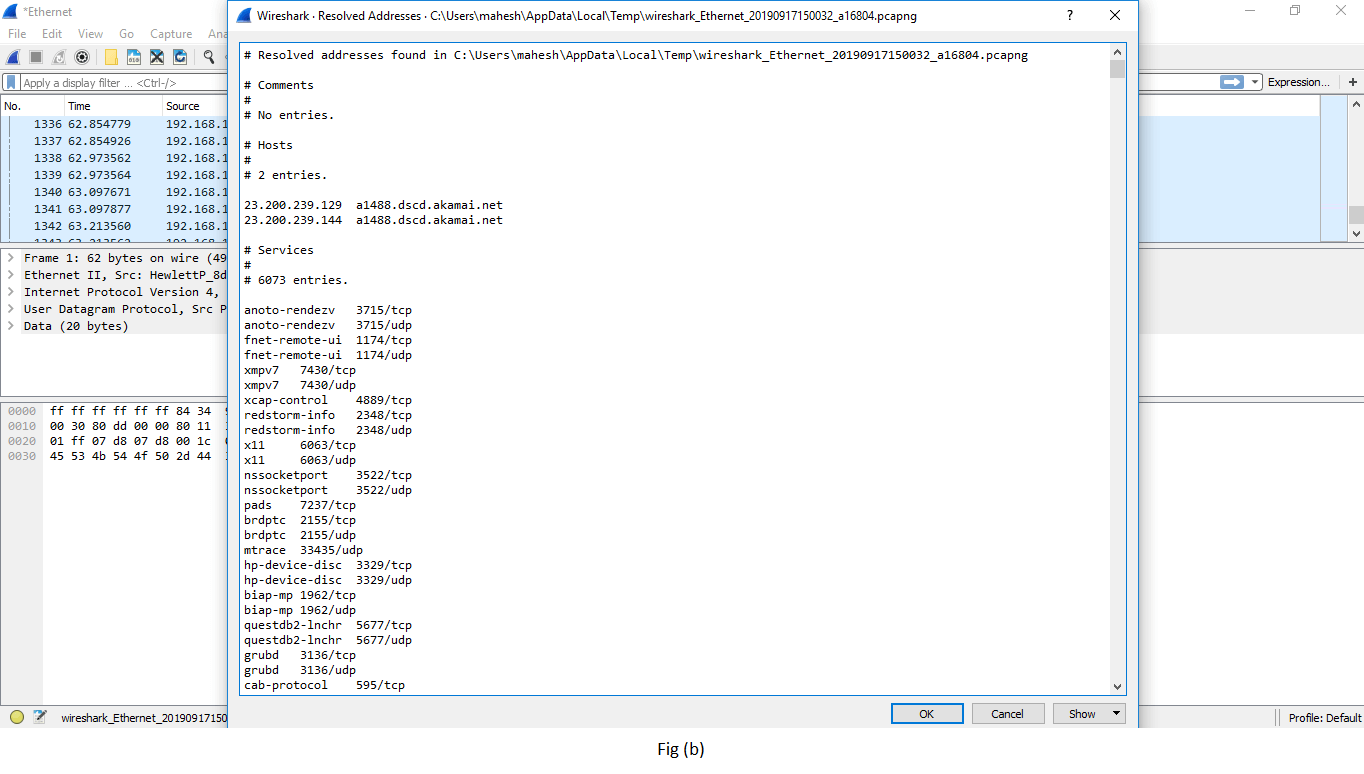

- #Wireshark capture filter to specific top level domain Pc
- #Wireshark capture filter to specific top level domain mac
Open a web browser and type Press Enter to continue.Į. After selecting the desired interface, click Start to capture the packets.ĭ. In the Wireshark window, select enp0s3 from the interface list and click Start.Ĭ. Gtk-Message: GtkDialog mapped without a transient parent. ** (wireshark-gtk:950): WARNING **: Couldn't connect to accessibility bus:įailed to connect to socket /tmp/dbus-REDRWOHelr: Connection refused In the terminal window, start Wireshark and click OK when prompted. This will demonstrate the use of the UDP transport protocol while communicating with a DNS server.Ī. In Part 2, you will set up Wireshark to capture DNS query and response packets. Part 2: Use Wireshark to Capture DNS Queries and Responses However, in a business or school network, the addresses would most likely be different. Note: The DNS IP address and default gateway IP address are often the same, especially in small networks. At the terminal prompt, enter netstat -r to display the IP routing table to the default gateway IP address. At the terminal prompt, enter cat /etc/nf to determine the DNS server. TX errors 0 dropped 0 overruns 0 carrier 0 collisions 0ī. Enter ifconfig at the prompt to display interface information. The information will be used in parts of this lab with packet analysis. Record this information in the table provided.
#Wireshark capture filter to specific top level domain mac
In Part 1, you will use commands on your CyberOps Workstation VM to find and record the MAC and IP addresses of your VM’s virtual network interface card (NIC), the IP address of the specified default gateway, and the DNS server IP address specified for the PC. Part 1: Record VM’s IP Configuration Information You will use Wireshark to examine the DNS query and response exchanges with the same server.

In this lab, you will communicate with a DNS server by sending a DNS query using the UDP transport protocol. DNS queries and responses are very small and do not require the overhead of TCP. UDP is connectionless and does not require a session setup as does TCP. Your PC’s DNS query and the DNS server’s response make use of the User Datagram Protocol (UDP) as the transport layer protocol.
#Wireshark capture filter to specific top level domain Pc
When you type a website URL into your browser, your PC performs a DNS query to the DNS server’s IP address. DNS is a distributed network of servers that translates user-friendly domain names like to an IP address. When you use the Internet, you use the Domain Name System (DNS). Part 3: Analyze Captured DNS or UDP Packets.Part 2: Use Wireshark to Capture DNS Queries and Responses.Part 1: Record a PC’s IP Configuration Information.


 0 kommentar(er)
0 kommentar(er)
